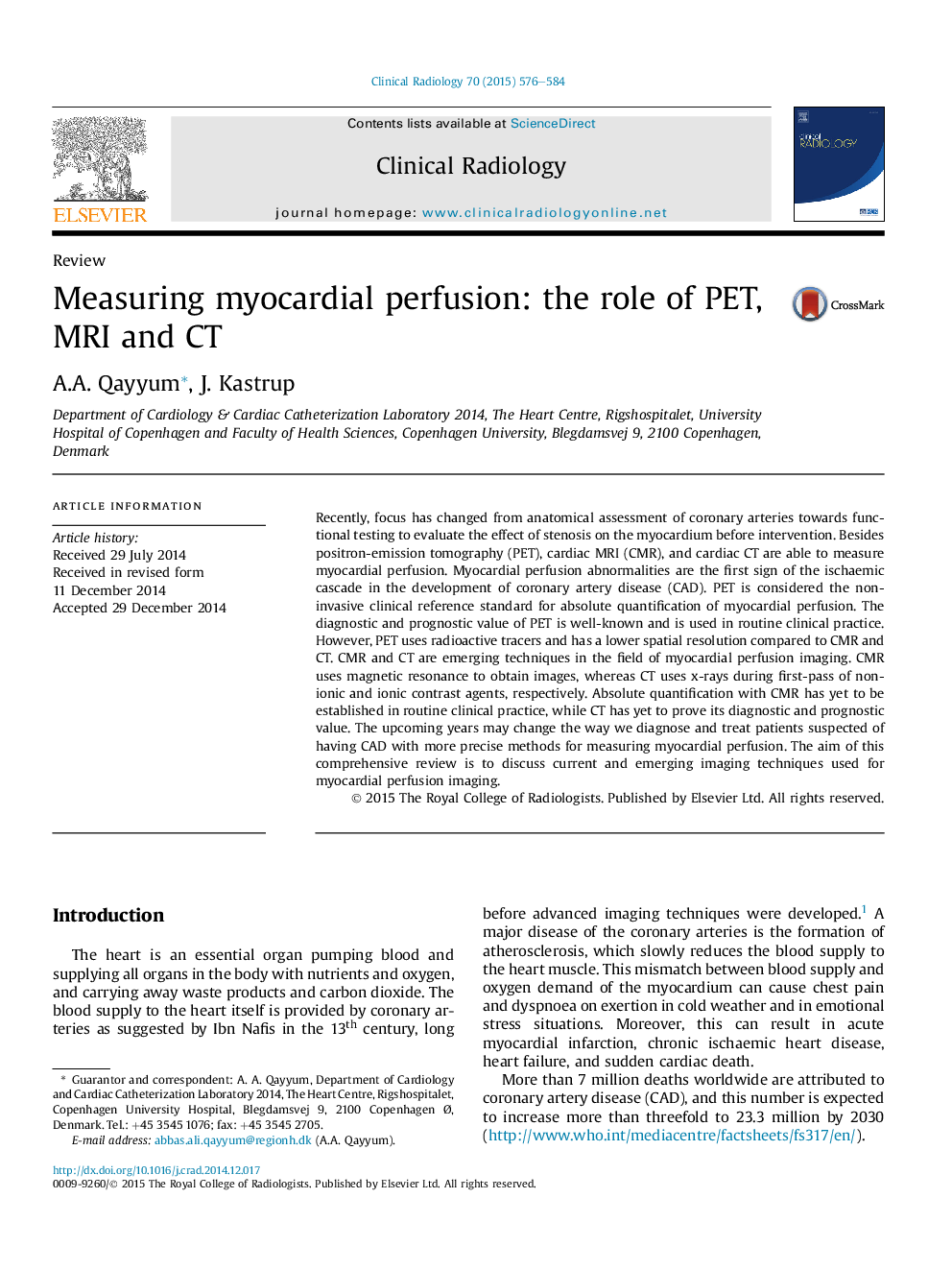| Article ID | Journal | Published Year | Pages | File Type |
|---|---|---|---|---|
| 6190859 | Clinical Radiology | 2015 | 9 Pages |
Recently, focus has changed from anatomical assessment of coronary arteries towards functional testing to evaluate the effect of stenosis on the myocardium before intervention. Besides positron-emission tomography (PET), cardiac MRI (CMR), and cardiac CT are able to measure myocardial perfusion. Myocardial perfusion abnormalities are the first sign of the ischaemic cascade in the development of coronary artery disease (CAD). PET is considered the non-invasive clinical reference standard for absolute quantification of myocardial perfusion. The diagnostic and prognostic value of PET is well-known and is used in routine clinical practice. However, PET uses radioactive tracers and has a lower spatial resolution compared to CMR and CT. CMR and CT are emerging techniques in the field of myocardial perfusion imaging. CMR uses magnetic resonance to obtain images, whereas CT uses x-rays during first-pass of non-ionic and ionic contrast agents, respectively. Absolute quantification with CMR has yet to be established in routine clinical practice, while CT has yet to prove its diagnostic and prognostic value. The upcoming years may change the way we diagnose and treat patients suspected of having CAD with more precise methods for measuring myocardial perfusion. The aim of this comprehensive review is to discuss current and emerging imaging techniques used for myocardial perfusion imaging.
